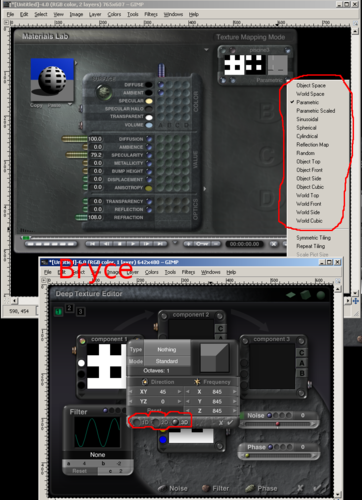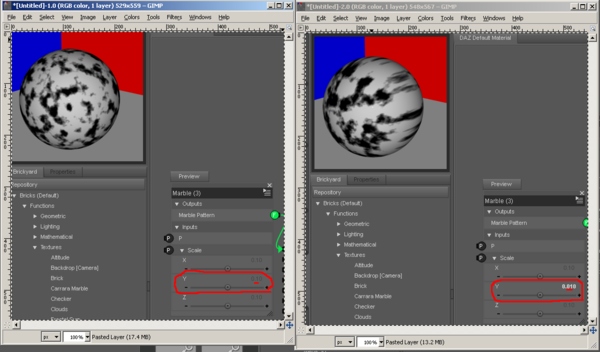shader mixer: procedural mapping modes, effects of X, Y, or Z parameter changes
 sriesch
Posts: 4,241
sriesch
Posts: 4,241
EDITED TO ADD: ignore this section, I was looking at it wrong, it actually is stretching as expected-->I have suddenly realized I'm not sure exactly how procedural materials are generated and/or applied. In the attached screenshot, I changed the Y scale of a marble brick, expecting to stretch the entire pattern by 10 times along the Y axis. Instead, it stretched mostly along the equator of the sphere.
So, this brings up several questions. First, how are procedural materials (that aren't tiled images) mapped to objects in the scene by default, or does it depend on multiple factors?
Second, are there multiple ways of mapping them that I can specify in my shader network? (for example, coming from the Bryce world, I would choose from a variety of mapping methods (screenshot of list), and/or one can select 1D, 2D, or 3D when calculating how some materials are generated. I understand Bryce works differently than DAZ Studio, I'm just trying to gain understanding by comparison with something I'm vaguely more familiar with.)






Comments
I think I misspoke in my first sentence, I think it is actually stretching as expected, I'm looking at it wrong, hang on....
Ok, first question is cleared up, I was just looking at it wrong, sorry for the confusion. The second question remains though.
And in case anybody is curious, I did a quick comparison of three cubes, left cube normal, middle cube stretched along Y, right cube stretched even more along Y. The pattern appears to stretch upwards from the bottom of the cube, so the bottom face is remaining the same and the top face will look different as a new part of the pattern previously inside the cube is exposed.